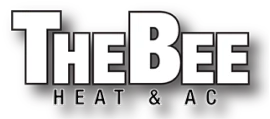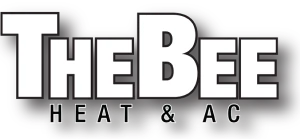Keeping your heat pump in good shape is important but can sometimes be forgotten among all the other tasks at home. However, maintaining it is critical to saving energy and money and ensuring it lasts longer. Our ultimate heat pump maintenance checklist makes it easy for you.
On This Article
hide
1)
What is a Heat Pump?
2)
Top 10 Benefits of Regular Heat Pump Maintenance
2.1)
Efficiency
2.2)
Long-term Functionality
2.3)
Reliability
2.4)
Improved Indoor Air Quality
2.5)
Comfort
2.6)
Safety
2.7)
Warranty Compliance
2.8)
Cost Savings
2.9)
Early Detection of Problems
2.10)
Optimal Performance
3)
17 Tips for Heat Pump Maintenance
3.1)
1. Put Your Thermostat in One Setting
3.2)
2. Limit Thermostat Setbacks to Twice a Day
3.3)
3. Limit Setbacks to Desired Temperature
3.4)
4. Maintain a Minimum Temperature of 65 Degrees in Winter
3.5)
5. Avoid Setting Thermostat Below 70 Degrees in Cooling Mode
3.6)
6. Check the Outdoor Heat Pump for Ice or Snow Build-Up
3.7)
7. Safely Remove Ice and Snow Build-Up
3.8)
8. Avoid Placing Outdoor Unit Under Leaking Gutters
3.9)
9. Raise the Heat Pump 4 to 8 Inches Above the Surface
3.10)
10. Check Air Filters Monthly
3.11)
11. Keep the Outdoor Unit Clean
3.12)
12. Keep Outdoor Coils Clean
3.13)
13. Maintain Adequate Clearance Around Heat Pump
3.14)
14. Flush Indoor Condensate Pan and Drain
3.15)
15. Oil Fan Motors Annually (if applicable)
3.16)
16. Schedule Annual Heat Pump Inspection
3.17)
17. Prioritize Professional Maintenance
4)
Get the Best Heat Pump Repair Services!
5)
People Also Ask!
5.1)
How Frequently Should I Plan Heat Pump Maintenance?
5.2)
Do I Need to Hire a Professional for Heat Pump Maintenance?
5.3)
What Indicates the Need for Maintenance or Repair for My Heat Pump?
Following the maintenance tips, you can improve your heat pump’s energy efficiency by up to 25%. It means lower bills, fewer repairs, and a longer-lasting system.
Our checklist includes all the required information, regardless of whether you want to handle it yourself or need professional help.
What is a Heat Pump?
Heat pumps are systems for both heating and cooling that move heat from indoor to outdoor spaces. It uses refrigerant to extract heat from one area and transfer it to another, providing warmth in winter and cooling in summer.
In heating mode, the heat pump transports heat from outdoor sources (air, ground, or water) into the home. In cooling mode, it removes heat from indoors and releases it outside.
Heat pumps are more energy-efficient than conventional air conditioners and furnaces for heating and cooling. Instead of burning fuel, they may supply both heating and cooling through the use of electricity.
Top 10 Benefits of Regular Heat Pump Maintenance
Firstly, let’s walk you through the reasons you should maintain the heat pump:
Efficiency
Frequent maintenance keeps your heat pump operating at maximum efficiency, which lowers energy use and utility costs.
Long-term Functionality
Maintaining your heat pump increases longevity and reduces the need for expensive replacements and repairs.
Reliability
Scheduled maintenance helps prevent unexpected breakdowns, ensuring your heat pump operates when needed.
Improved Indoor Air Quality
Dust, allergens, and other pollutants circulated by the system are reduced when filters and coils are clean.
Comfort
Comfort levels are maintained throughout your house with a well-kept heat pump’s reliable heating and cooling.
Safety
Regular inspections identify and address potential safety hazards, such as electrical issues or refrigerant leaks, keeping your home and family safe.
Warranty Compliance
A lot of manufacturers demand routine maintenance to maintain warranty coverage. Neglecting maintenance could void your warranty.
Cost Savings
Investing in preventative maintenance saves money in the long run by reducing energy costs, minimizing repairs, and avoiding premature replacements.
Early Detection of Problems
Professional inspections save you time, money, and trouble by enabling specialists to find small problems before they become larger ones.
Optimal Performance
Properly maintained heat pumps operate more efficiently, providing consistent heating and cooling performance throughout the year.
17 Tips for Heat Pump Maintenance
Ready to go through some of the best heat pump maintenance tips? Let’s get into it:
1. Put Your Thermostat in One Setting
Especially in the winter, constantly regulating the thermostat can result in increased utility bills. Maintaining a steady indoor climate and lowering the temperature will lighten the strain on your heat pump.
2. Limit Thermostat Setbacks to Twice a Day
If using a setback thermostat, limit adjustments to twice daily, such as when working and sleeping. It maintains comfort while minimizing energy usage when heating or cooling demands are lower.
3. Limit Setbacks to Desired Temperature
To avoid excessive energy consumption, limit thermostat setbacks to approximately five degrees. This moderate adjustment still provides energy savings without compromising indoor comfort.
4. Maintain a Minimum Temperature of 65 Degrees in Winter
During the heating season, avoid setting the thermostat below 65 degrees Fahrenheit. Lower temperatures can lead to discomfort and potential issues with maintaining a consistent indoor temperature.
5. Avoid Setting Thermostat Below 70 Degrees in Cooling Mode
To prevent the indoor coil from freezing and minimize condensation in the house, refrain from setting the thermostat below 70 degrees Fahrenheit during the cooling season. Lower settings increase utility costs and strain the heat pump system.
6. Check the Outdoor Heat Pump for Ice or Snow Build-Up
Inspect the external heat pump for excessive ice or snow following inclement weather. This build-up can hinder the unit’s performance and efficiency, necessitating removal for proper operation.
7. Safely Remove Ice and Snow Build-Up
For the unit to work properly, any ice or snow covering it needs to be removed. Move the thermostat to Emergency Heat or off, and take extra care to clear the ice and snow. Steer clear of sharp things as they might cause damage.
8. Avoid Placing Outdoor Unit Under Leaking Gutters
Ensure the outside unit is not placed under a leaking gutter, especially in the winter. If water drips onto the unit, it could freeze, blocking ventilation and eventually causing the device to freeze completely.
9. Raise the Heat Pump 4 to 8 Inches Above the Surface
Elevate the heat pump 4 to 8 inches above the surface to allow for adequate drainage and to stop snow and ice from building up. This elevation indicates optimal performance, especially during winter weather conditions.
10. Check Air Filters Monthly
Maintaining ventilation and indoor air quality requires routinely inspecting, cleaning, or replacing air filters. Clogged filters restrict airflow, reducing efficiency and damaging the system.
11. Keep the Outdoor Unit Clean
Regularly remove snow, ice, and debris from the outdoor unit to prevent airflow obstruction and maintain optimal heat pump performance.
12. Keep Outdoor Coils Clean
Clean outdoor coils regularly to prevent dirt buildup, hindering heat transfer and reducing efficiency. Use a heavy-duty degreaser and hose to clean the coils, ensuring the unit is turned off first.
13. Maintain Adequate Clearance Around Heat Pump
Maintain bushes trimmed back at least 18 inches on all sides of the heat pump to enable adequate ventilation and maintenance. Clear space provides efficient operation and easy maintenance access.
14. Flush Indoor Condensate Pan and Drain
To avoid blockages and water damage, clean the inside condenser pan and drain before turning on the air conditioning in the spring. It is important, mainly if the unit is above or in a finished living space.
15. Oil Fan Motors Annually (if applicable)
Some fan motors may require annual oiling for smooth operation. However, most modern fan motors are permanently sealed and do not require additional lubrication.
16. Schedule Annual Heat Pump Inspection
Make plans for a qualified service expert to inspect the heat pump at least once a year. Frequent maintenance provides optimal performance and lengthens the system’s lifespan by aiding in the early detection of possible issues.
17. Prioritize Professional Maintenance
Annual inspections by a trained service technician are essential for thorough maintenance. Professionals can identify potential issues, check components’ functions, and perform necessary repairs or adjustments.
Get the Best Heat Pump Repair Services!
Each step, from thermostat management to outdoor unit care and regular filter checks, is crucial in optimizing performance and reducing energy costs.
Maintaining your heat pump involves a combination of regular homeowner tasks and professional inspections.
However, contact The Beet Heat and AC for excellent heat pump repair services if you have a malfunctioning heat pump.
People Also Ask!
How Frequently Should I Plan Heat Pump Maintenance?
You should perform routine maintenance on your heat pump at least once a year. It makes certain that your system is operating effectively.
Do I Need to Hire a Professional for Heat Pump Maintenance?
Certain maintenance jobs like routinely cleaning or changing air filters are easily doable independently. Professionals can inspect and tune up the system, check for leaks, and test components for optimal performance.
What Indicates the Need for Maintenance or Repair for My Heat Pump?
Reduced heating or cooling efficiency, uneven temperatures, noise from the system, increased energy bills, and frequent cycling on and off point toward heat pump repair.

